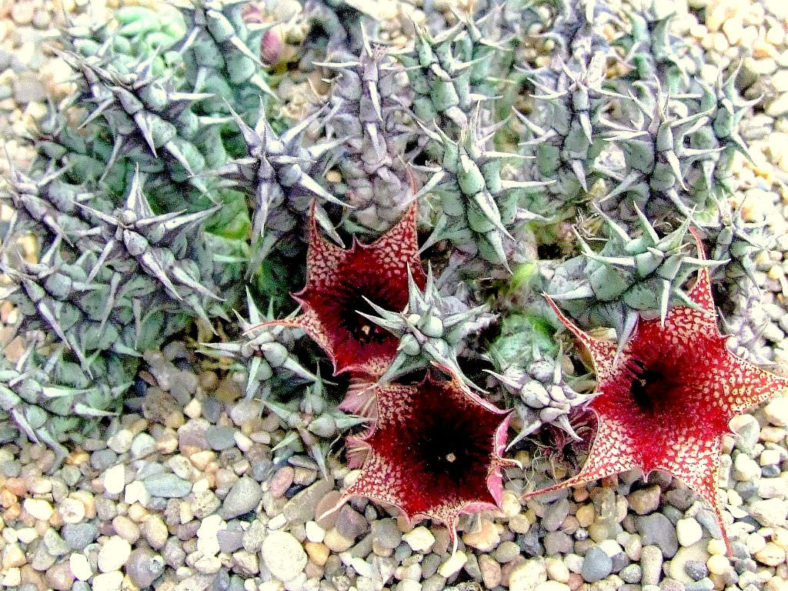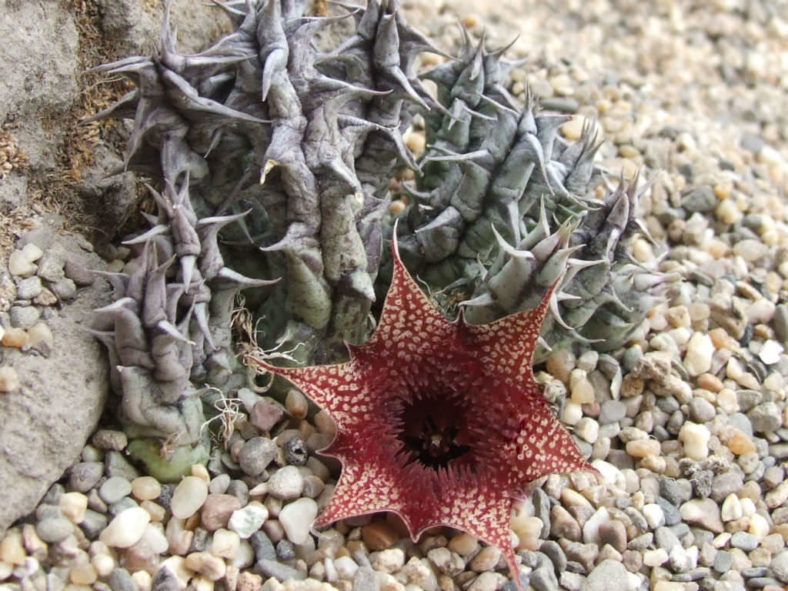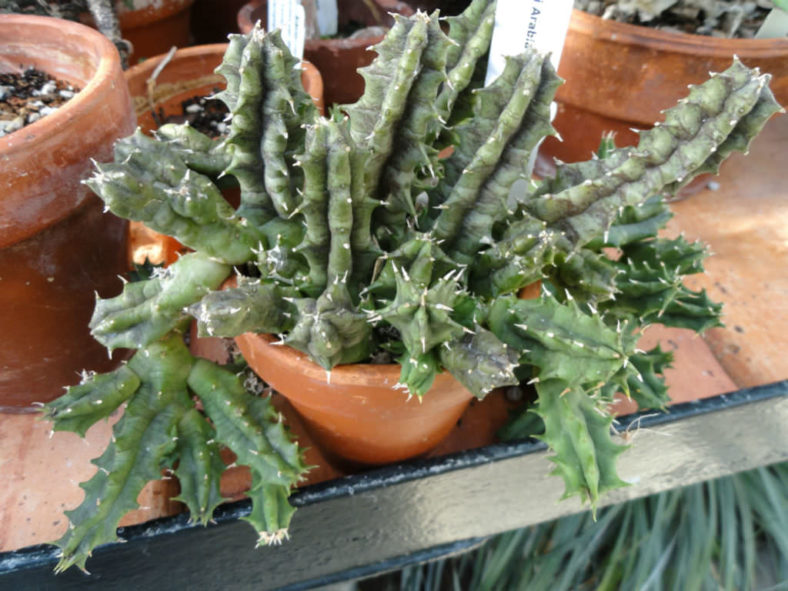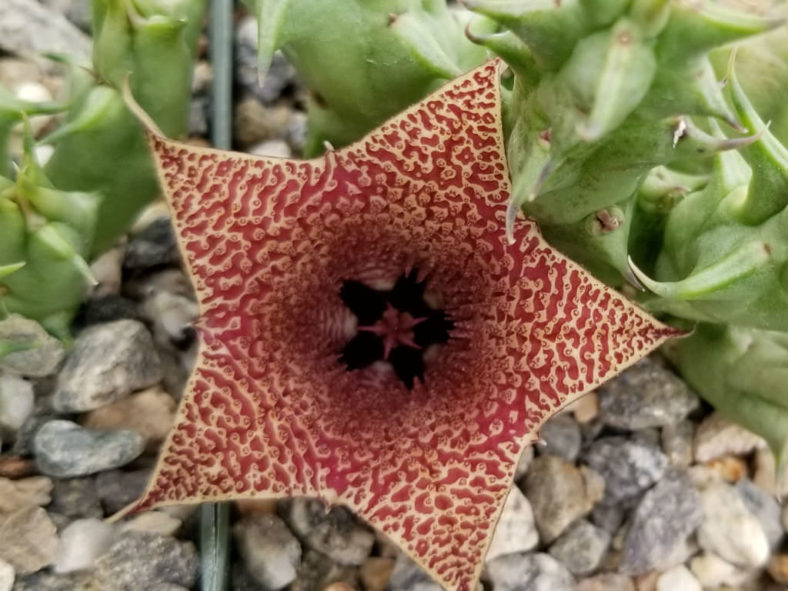Scientific Name
Huernia saudi-arabica D.V.Field
Synonym(s)
Huernia saudiarabica
Scientific Classification
Family: Apocynaceae
Subfamily: Asclepiadoideae
Tribe: Stapeliae
Genus: Huernia
Origin
Huernia saudi-arabica is native to Saudi Arabia.
Description
Huernia saudi-arabica is a small succulent that forms clumps of fleshy stems with soft, triangular tubercles joined into five continuous angles along the stem. The stems can grow up to 3 inches (7.5 cm) long. They are grey-green, irregularly mottled with purple. Each tubercle is tipped with a soft tooth.
The bell-shaped flowers can reach up to 1.6 inches (4 cm) in diameter. The corolla is deep purplish-red inside with raised whitish-yellow papillae. The blackish corona in the center is sometimes basally streaked with fine golden lines.

Hardiness
USDA hardiness zones 10b to 11b: from 35 °F (+1.7 °C) to 50 °F (+10 °C).
How to Grow and Care
Huernias require a potting mix with excellent drainage. A succulent plant mix of 50 percent pumice or perlite, 25 percent peat or organic mulch, and 25 percent sand helps prevent rotting and overwatering. Roots experience dieback in cool-season dormancy, so plants grow best in shallow containers that allow the soil to dry out quickly. Using clay pots further helps the soil from staying too wet. An underlayment of coarse gravel below the soil mix also improves drainage. In climates with damp, cool summers, a layer of gravel between the plant and the soil mix also helps prevent the stems from staying too moist.
Outdoor plantings do well in raised beds. Huernias prefer bright light or partial shade. In nature, they grow underneath shrubs or other plants. Too much sun causes stems to develop protective reddish or purple pigmentation and can scald the stems. Too little light leads to weak, thin growth with decreased flower production. These plants grow best between 50 and 80 °F (10 and 27 °C). Protect them from freezing weather.
Learn more at How to Grow and Care for Huernia.
Links
- Back to genus Huernia
- Succupedia: Browse succulents by Scientific Name, Common Name, Genus, Family, USDA Hardiness Zone, Origin, or cacti by Genus
Photo Gallery
Click on a photo to see a larger version.


